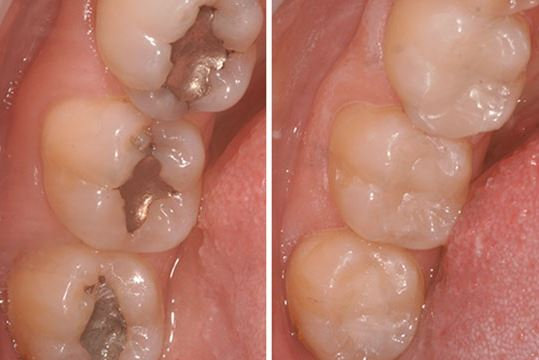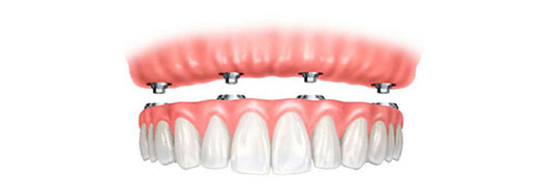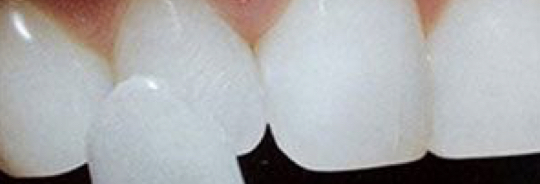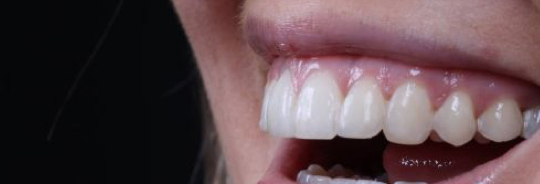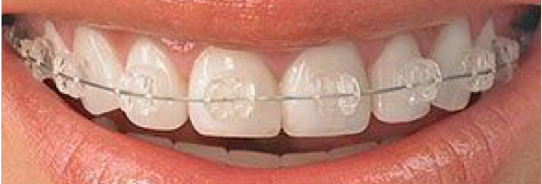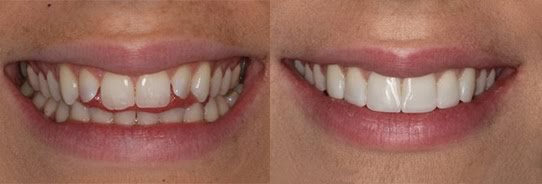
Blog
We post all the latest information here regularly so it's always up to date for you. If there is a topic you would like to have us cover please ask.
20 June 2023
Understanding Different Types of Dental Fillings: Which Is Right for You?
.png)
When it comes to dental fillings, there isn't a one-size-fits-all solution. With advancements in dentistry, various types of dental fillings are available to address different needs and preferences. In this blog post, we will delve into the different types of dental fillings, their advantages, and factors to consider when choosing the right filling for your oral health. By understanding the options, you can make an informed decision and work together with us at Seapoint Clinic to achieve optimal dental care.
- What Are Dental Fillings?
Dental fillings are a common restorative dental treatment used to repair teeth that have been affected by decay or cavities. When a tooth develops a cavity, it means that the enamel, the outer protective layer of the tooth, has been damaged by bacteria and acid buildup. Dental fillings serve the purpose of removing the decayed portion of the tooth and filling the resulting space with a suitable material to restore its function and appearance. Fillings help to prevent further decay, strengthen the tooth structure, and restore proper chewing and biting abilities. They play a crucial role in preserving the overall health and integrity of the affected tooth, preventing the need for more invasive procedures such as extractions or root canals. - Amalgam Fillings: Strength and Durability
Amalgam fillings, also known as silver fillings, have long been a popular choice in the past for dental restorations due to their exceptional strength and durability. These fillings are composed of a mixture of metals, including silver, tin, copper, and mercury. The presence of mercury in amalgam fillings has raised concerns, but extensive research has shown that the amount of mercury released is minimal and well within safety limits.
One of the key advantages of amalgam fillings is their remarkable durability. They are highly resistant to wear and can withstand the forces of chewing and biting over an extended period. This makes them particularly suitable for restoring teeth in areas of the mouth where significant pressure is applied during chewing, such as molars.
Another benefit of amalgam fillings is their affordability compared to other options. They are typically less expensive than alternative materials, making them a cost-effective choice for individuals on a budget.
While amalgam fillings excel in terms of strength and cost, their appearance is a notable drawback for some patients. Due to their silver colour, they are more visible than tooth-coloured fillings, which can be a concern for individuals who prioritise aesthetics. At Seapoint Clinic, we do not offer this type of filling.
.png)
- Composite Resin Fillings: Aesthetic Appeal
Composite resin fillings, also known as tooth-coloured fillings, offer a desirable combination of functionality and aesthetic appeal. Made from a mixture of plastic and glass particles, composite resin fillings can be precisely matched to the colour of your natural teeth, making them virtually indistinguishable once placed.
The main advantage of composite resin fillings is their ability to blend seamlessly with the surrounding tooth structure, resulting in a natural and aesthetically pleasing appearance. This makes them an excellent choice for restoring teeth in visible areas, such as the front teeth, where maintaining a natural smile is a top priority for many individuals.
In addition to their cosmetic benefits, composite resin fillings also provide sufficient strength for small to medium-sized restorations. They bond directly to the tooth surface, which helps to reinforce the tooth structure and prevent further decay. This bonding process also requires less removal of healthy tooth structure compared to other filling materials, making it a conservative option.
However, it's important to note that composite resin fillings may not be as durable as some other materials, particularly in larger restorations or areas with excessive biting forces. They may be more prone to wear and staining over time and may require periodic maintenance or replacement. Your dentist can evaluate your specific situation and advise you on the suitability of composite resin fillings based on factors such as the size and location of the cavity, your oral health, and your preferences.
Overall, composite resin fillings provide an excellent choice for individuals seeking both functional and aesthetically pleasing dental restorations. Their ability to mimic the natural appearance of teeth makes them a popular option for patients looking to maintain a beautiful smile while addressing their dental needs.
.png)
- Ceramic Fillings: Strength and Aesthetics Combined
Ceramic fillings, also known as porcelain fillings, offer a compelling combination of strength and aesthetics, making them a popular choice for individuals seeking durable and natural-looking dental restorations. These fillings are crafted from high-quality ceramic materials that closely resemble the colour and translucency of natural teeth.
One of the primary advantages of ceramic fillings is their ability to provide excellent strength and durability. They are highly resistant to wear and can withstand the forces of chewing and biting, making them suitable for both small and large restorations. Ceramic fillings also exhibit remarkable stability, maintaining their shape and colour over an extended period, which contributes to their longevity.
In terms of aesthetics, ceramic fillings are highly regarded for their ability to blend seamlessly with the natural tooth enamel. The colour and texture of ceramic can be precisely matched to the surrounding teeth, ensuring a seamless integration within the smile. This makes them an ideal choice for front teeth or other visible areas where maintaining a natural appearance is of utmost importance.
Additionally, ceramic fillings are biocompatible, meaning they are well-tolerated by the surrounding gum tissue and are less likely to cause allergic reactions or sensitivity issues. They are also resistant to staining, allowing them to retain their natural beauty and whiteness over time.
It's important to note that the placement of ceramic fillings typically requires more extensive preparation and may require multiple visits to the dentist. Additionally, ceramic fillings tend to be more expensive compared to other filling materials. However, for those who prioritise both strength and aesthetics, the benefits of ceramic fillings often outweigh these considerations.
.png)
- Glass Ionomer Fillings: Versatility and Prevention
Glass ionomer fillings are a versatile option in dental restorations, offering unique advantages in certain situations. These fillings are made from a blend of acrylic and glass powders, resulting in a material that can bond chemically to the tooth structure.
One of the notable advantages of glass ionomer fillings is their versatility in application. They are commonly used in areas where aesthetics may be of lesser concern, such as in primary (baby) teeth or non-visible surfaces of permanent teeth. Glass ionomer fillings are particularly beneficial in pediatric dentistry due to their ability to release fluoride, which helps prevent further decay and strengthens the surrounding tooth enamel. This preventive feature is advantageous in patients with a higher risk of cavities.
Furthermore, glass ionomer fillings have the ability to adhere to both enamel and dentin, which enhances their sealing properties. This characteristic makes them suitable for areas where moisture control during placement may be challenging, such as near the gum line. Glass ionomer fillings also exhibit a lower risk of post-operative sensitivity compared to other filling materials.
However, it's important to note that glass ionomer fillings may not possess the same level of durability as some other materials. They are more susceptible to wear and may not withstand heavy chewing forces in large restorations. Consequently, they are commonly used for smaller cavities or as temporary fillings before a more permanent restoration can be placed.
.png)
- Gold Fillings: Durability & Longevity
Gold fillings, known for their durability and longevity, have been a trusted option in dental restorations for many years. These fillings are crafted from a mixture of gold, copper, and other metals, offering exceptional strength and resilience.
One of the primary advantages of gold fillings is their outstanding durability. Gold is a highly resilient material that can withstand the forces of chewing and biting over an extended period. Unlike some other filling materials, gold fillings are less prone to wear and are more resistant to fracture or chipping. This makes them particularly suitable for restoring teeth in areas with high chewing pressure, such as molars.
In addition to their durability, gold fillings have an impressive lifespan. With proper oral hygiene and regular dental care, gold fillings can last for many years, often outlasting other types of fillings. This longevity reduces the need for frequent replacement and can ultimately result in cost savings over time.
Furthermore, gold fillings are biocompatible, meaning they are well-tolerated by the surrounding gum tissue. They have a minimal risk of causing allergic reactions or sensitivity issues, making them a suitable choice for individuals with specific sensitivities.
It's important to note that gold fillings have a distinct appearance compared to tooth-coloured options. The metallic colour of gold fillings may be visible when placed in visible areas of the mouth, which can be a consideration for individuals who prioritise aesthetics.
When considering gold fillings, it's essential to consult with your dentist to evaluate your specific needs. They can assess factors such as the size and location of the cavity, your oral health condition, and your preferences to determine whether gold fillings are the most appropriate choice for you.
.png)
- Factors to Consider When Choosing a Filling
When it comes to choosing a dental filling, several factors should be taken into consideration to ensure the best outcome for your oral health. Size and location of the cavity: The size and location of the cavity play a crucial role in determining the appropriate filling material. Aesthetic preferences: If aesthetics are important to you, tooth-coloured fillings like composite resin or ceramic offer a natural appearance that can blend seamlessly with your existing teeth. Longevity and durability: Consider the expected lifespan of the filling material. Gold fillings are known for their exceptional durability and longevity, while composite resin fillings may require periodic maintenance or replacement over time. Oral health condition: The overall health of your teeth and gums can impact the choice of filling material. For example, if you have a higher risk of tooth decay or are prone to gum disease, your dentist may recommend materials with preventive properties, such as glass ionomer fillings. Cost considerations: Different filling materials vary in cost. Amalgam fillings are generally more affordable, while materials like gold or ceramic fillings may be more expensive. Dentist's recommendation: Trust the expertise of your dentist. They will assess your oral health, consider your preferences, and provide professional recommendations based on their knowledge and experience. They can guide you towards the most suitable filling material for your specific needs.
In conclusion, choosing the right dental filling is a decision that requires careful consideration of various factors. The size and location of the cavity, aesthetic preferences, longevity and durability, oral health condition, allergies or sensitivities, cost considerations, and the dentist's recommendation all play a significant role in making an informed choice.
It's important to strike a balance between functionality and aesthetics when selecting a filling material. Different materials offer unique advantages, whether it's the strength and durability of amalgam or gold fillings, the natural appearance of tooth-coloured composite resin or ceramic fillings, or the preventive properties of glass ionomer fillings.
By discussing your needs and concerns with your dentist, you can receive personalised recommendations that take into account your specific oral health condition, budget, and preferences. Ultimately, the goal is to choose a filling material that restores your tooth's functionality, promotes oral health, and meets your aesthetic expectations.
Remember, regular dental check-ups and maintaining good oral hygiene practices are essential regardless of the filling material chosen. By partnering with your dentist and practicing preventive care, you can ensure the longevity and success of your dental restorations, supporting a healthy and confident smile.





